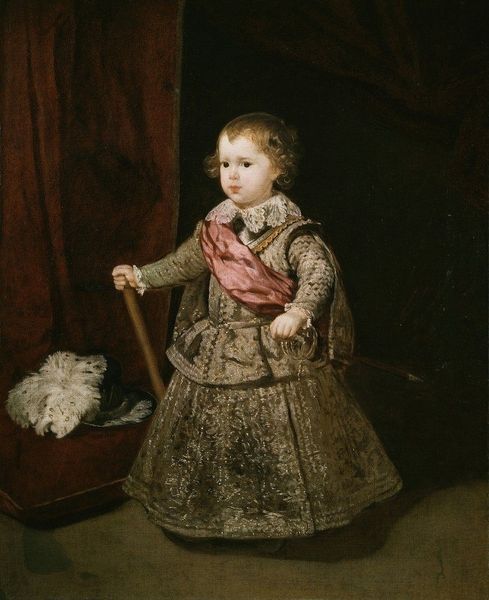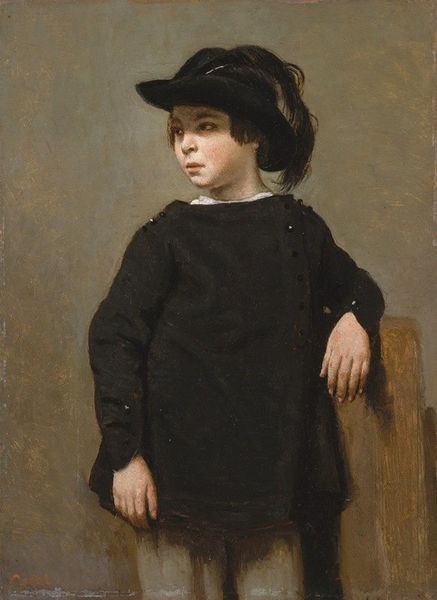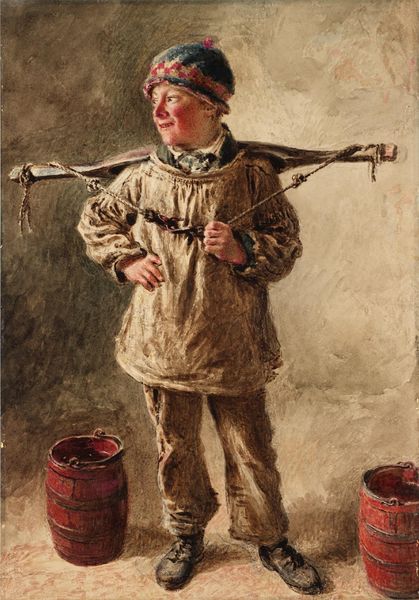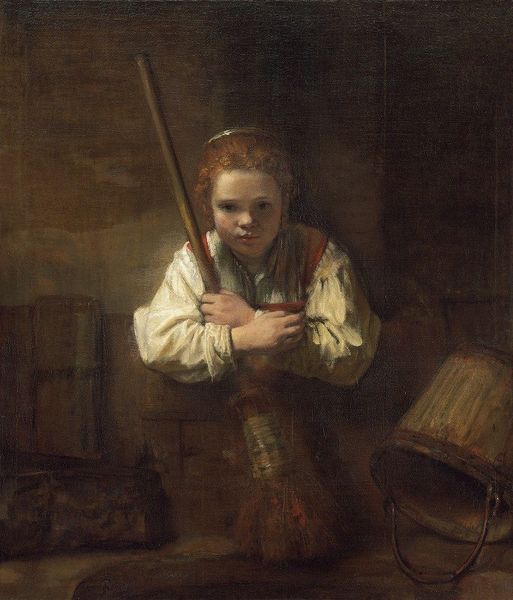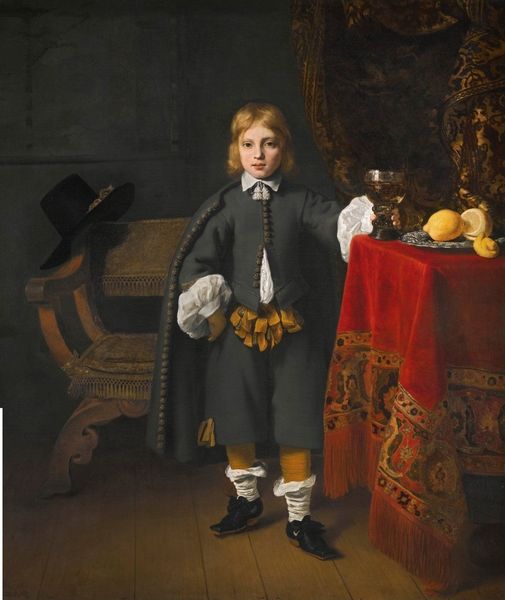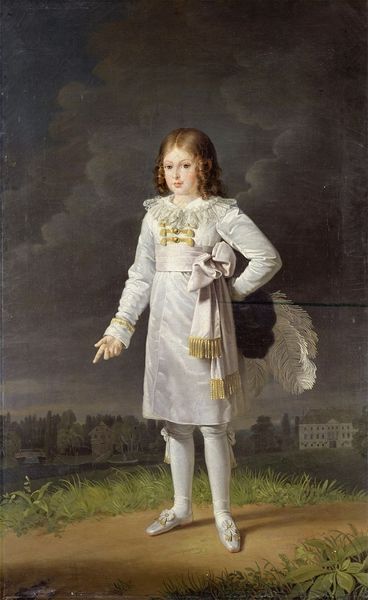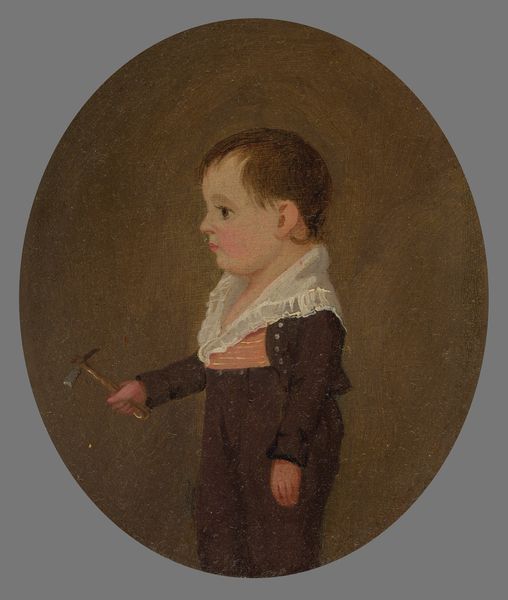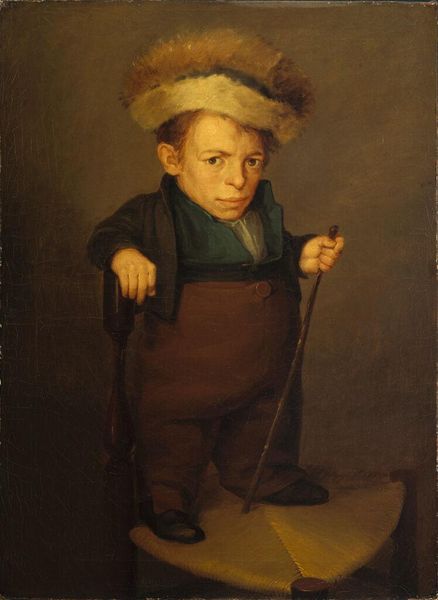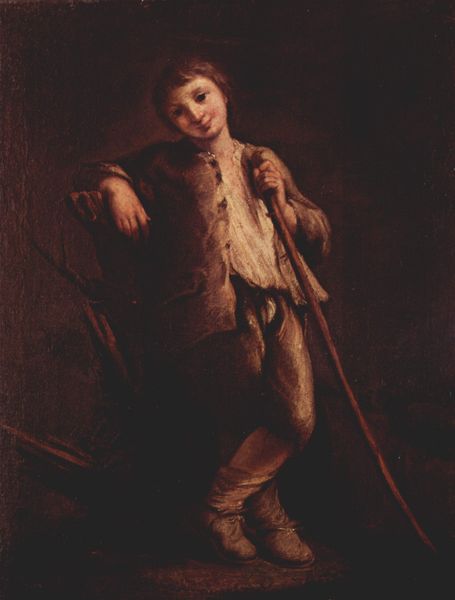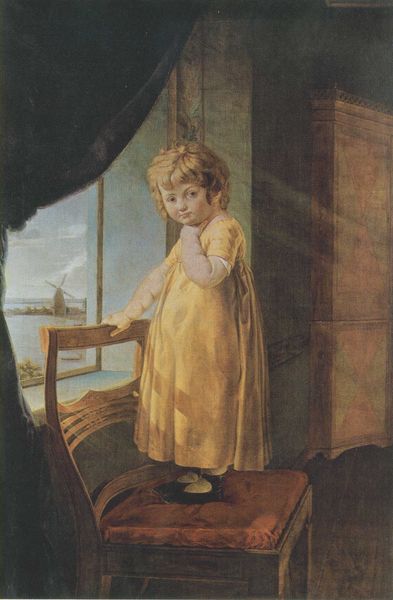
oil-paint
#
portrait
#
narrative-art
#
baroque
#
dutch-golden-age
#
oil-paint
#
genre-painting
#
history-painting
Copyright: Public domain
Editor: Here we have Ferdinand Bol's oil painting, "Otto Van Der Waeyen in a Polish Costume," created in 1656. The contrast between the boy's soft features and the weaponry creates an interesting tension. What do you see in this piece from a formal perspective? Curator: Indeed. First, note Bol's masterful rendering of textures, particularly in the boy's coat. The luminous, almost golden fabric contrasts with the stark matte of the cannon in the background, creating visual interest. Consider also how the composition directs our gaze: the diagonal line formed by the rapier, counterbalanced by the drum and shield, effectively anchors the boy's figure within the pictorial space. Are you aware of the function of this structural arrangement? Editor: So, the contrast isn't just aesthetic; it directs the eye and creates a sense of balance, connecting the figure with the still life? Curator: Precisely. Observe further the limited color palette. Earth tones dominate, enhancing the realism. Bol's attention to detail—note the intricate design on the sword hilt, the reflection on the shield, the buttons of the garment—contributes to a powerful visual language. These are all compositional elements working to build tension in this work, not only with the juxtaposition you noted, but also in how space, depth and form are created using the artist's material vocabulary. Editor: It’s fascinating to consider how the composition elevates the portrait, it’s so much more than a record of appearance! Thanks for sharing your insight. Curator: My pleasure, examining the interplay of formal elements enhances one’s appreciation of Bol's technical brilliance. It demonstrates that beyond mere representation, art operates as a complex system of visual communication.
Comments
No comments
Be the first to comment and join the conversation on the ultimate creative platform.

